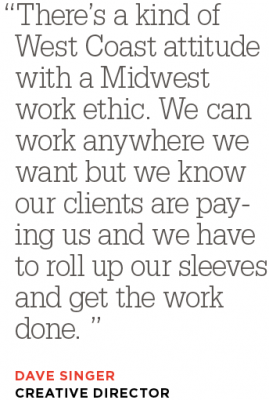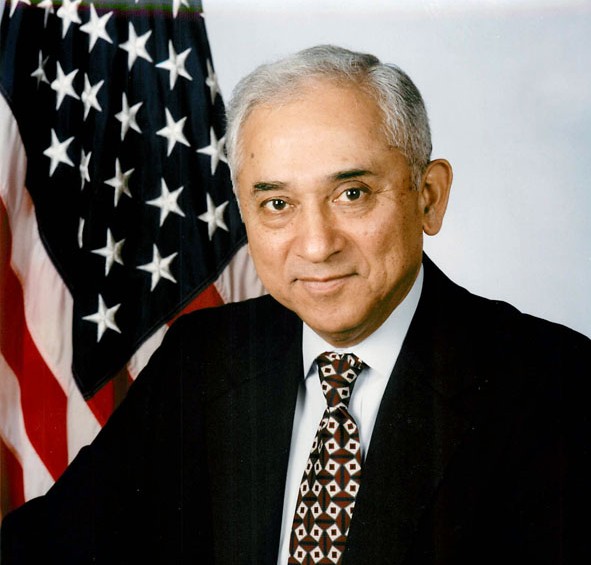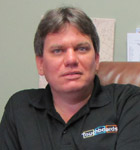As the woman inched closer, her eyes lit up with recognition and Brian Roderman began to panic. He could not immediately recognize who she was, yet something about her was familiar. When she spoke, he instantly recognized her, yet she looked so different. “Thanks to you,” she quipped smiling. “The kitchen gadgets your firm designed, the ones with the portion control, I bought every one of them and I lost weight.”
Roderman ’s voice oozes joy when he tells that story because it exemplifies the company he and his partner Ken Buras of the Texas-based In2 Innovation, Inc. set out to create five years ago. More than just a firm that designs, creates, and puts products on the shelves, In2 Innovation strives to change the way we live, transform how we see the world, and even redesign the way a company works in its quest to be “the biggest little innovation design firm in the world.”
 From gas pumps to power strips to the ovens at Starbucks, In2 Innovation is populating the world with richly designed yet highly functional products. The company’s process focuses on the business needs of its clients as well as the technology to create those products and the components users actually want in those products. Also known as BTU, this road map is a holy trinity of product development that few design and product-development firms dare to tackle. “There are a lot of design firms out there but many do not go beyond providing conceptual designs and CAD data,” says Buras, who heads up manufacturing and engineering for In2 Innovation. “We really wanted to build a company where we can do everything, from the idea to the design to manufacturing the product to packaging and putting the product into the customer’s hands.”
From gas pumps to power strips to the ovens at Starbucks, In2 Innovation is populating the world with richly designed yet highly functional products. The company’s process focuses on the business needs of its clients as well as the technology to create those products and the components users actually want in those products. Also known as BTU, this road map is a holy trinity of product development that few design and product-development firms dare to tackle. “There are a lot of design firms out there but many do not go beyond providing conceptual designs and CAD data,” says Buras, who heads up manufacturing and engineering for In2 Innovation. “We really wanted to build a company where we can do everything, from the idea to the design to manufacturing the product to packaging and putting the product into the customer’s hands.”
Such boldness is not surprising from a firm cofounded by a guy who decided to redesign one of America’s most iconic and recognizable products—the fire truck. “My dad was a fireman and I spent a lot of time around him at the firehouse,” Roderman says. “There’s a really interesting human dynamic of man and machine and how they intersect with one another in a fire truck.” Realizing a dream, Roderman has helped design some of the best-selling fire trucks sold today.
From fire trucks, Roderman went on to design many other products for several firms before he met Buras in 2004. Buras, who traveled the corporate route through Texas Instruments, Compaq, and Dell, has amassed a library full of knowledge about manufacturing. Working together the two hit it off and in 2006 they began thinking what if you could create a design firm that not only did the creative design but also the manufacturing? What if we could have small, dynamic teams in multiple cities to provide better access to consumer insights and client interaction and tie them all together using high-tech, low-cost tools?
For Dave Singer, one of In2 Innovation’s employees, this experiment looks like nothing he has experienced before. Roderman is in Dallas. Buras is in Houston, while Singer lives in Austin, Texas. Then there’s their manufacturing office in China. In2 Innovation’s distributed model allows employees to work in multiple cities but keeps them connected through a series of technology tools such as Go-To-Meeting and Skype. “There’s a kind of West Coast attitude with a Midwest work ethic,” Singer says. “We can work anywhere we want but we know our clients are paying us and we have to roll up our sleeves and get the work done. We’re collaborative virtually and when necessary, we also have physical team centers to work side-by-side one another.”
Even though they may be far-flung, In2 Innovation’s products are not far-fetched. When a client asked In2 Innovation to create the Healthy Steps line of utensils to help people live a healther life style, they didn’t define what utensils they wanted. Instead, the project team spent hours with families in their kitchens watching them prepare meals. They asked lots of questions, they hired a nutritionist. And with the research gathered, they began to brainstorm.
Couple Roderman ’s creative vision with Buras’s manufacturing know-how and the team came up with 20 portion-control utensils at a price point averaging $5 a piece and brought them to the market starting in just 12 months. And the end result was a smiling old friend who let Roderman know that their work changed her life. “It was such a fantastic thing, a very personal thing,” Roderman says. “It was real exciting she acknowledged the design and innovation and it had that type of impact upon her. That’s when the BTU thing really works for us.”

